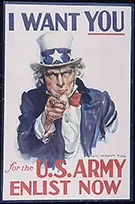Allied Powers and Leaders
The Allies during World War II were those leaders who stood against Germany and its allies during the Second World War. While not every country fought Germany from the very beginning of the war, all played a part in the defeat of the Axis powers. The Allied Powers generally consisted of Great Britain, The Soviet Union, China and the United States.
Great Britain was one of the first allied powers, but it was not always against Germany. After the First World War, Great Britain worked hard to build up its armies and supplies. Great Britain had two different leaders during World War II.


Neville Chamberlain. At the beginning of the war, Neville Chamberlain was Prime Minister of Great Britain. Before the war, Chamberlain was a frequent guest of Adolf Hitler. He was opposed to war and often promised the British people “Peace in our time.” He was more than willing to ignore when Germany didn’t follow the Treaty of Versailles if it meant keeping the peace. He even went so far as to sign a treaty that allowed Germany to invade Czechoslovakia.
He also signed a treaty with Italy after that country invaded Ethiopia. He hoped that by giving Germany and Italy smaller countries that he could prevent a larger war. When Germany invaded Poland in 1939, Chamberlain said Britain would fight if Germany did not leave. But, when Germany refused, Chamberlain didn’t do anything at all. When Germany invaded Norway and Denmark, the people of Britain looked for a new leader.

Winston Churchill. Before the war, Winston Churchill spoke against Germany and its actions. He disagreed with Chamberlain’s plan of letting Germany take over so many smaller countries. When the British people saw that he was right, they elected Churchill Prime Minister of Great Britain. By this time, German advances already threatened Britain. Only two days after Churchill took office, German forces invaded France.
Within months, Germany bombed London every night. But Churchill had already worked hard to form a friendship with the United States President, Franklin D. Roosevelt. The United States sent supplies and ammunition to Britain long before it sent troops. Churchill brought together different groups of British government. They all worked together to defend their country. Churchill worked with Josef Stalin and Franklin Roosevelt. Together the three leaders worked to defeat the Axis powers.

Josef Stalin. Before the war, Josef Stalin was a close friend of Adolf Hitler. Like Neville Chamberlain, Stalin believed that Hitler wanted peace for Germany and the rest of the world. As a leader, he felt that Hitler, like himself, was simply trying to create a new form of government. When he signed the Pact of Nonaggression, Stalin felt that he had created an ally out of the new German leader.
However, that friendship didn’t last long. In 1941, Hitler turned his armies toward the Soviets. While Stalin didn’t quite trust the west, He met with Franklin Roosevelt and Winston Churchill to craft a plan to defeat Germany.

Franklin Delano Roosevelt. The 32nd president of the United States won a record four re-elections serving from 1933 until his death in 1945. In the early days of the war, Roosevelt spoke openly to the American people. He promised that their sons would not have to fight in a foreign war. However, this put him in a tough position with the rest of the world.
So he made guns and other supplies available to Britain. He gave them everything they needed to fight a war except soldiers. When the Japanese bombed Pearl Harbor, everything changed. Overnight, the United States fought a war in both Europe and the South Pacific. Roosevelt died April 12, 1945, just before the end of the war.

Harry S. Truman. Truman was the Vice President under Franklin D. Roosevelt. After the death of the president, Truman became president of the United States. He made the final decision to bomb Hiroshima and Nagasaki. Truman also oversaw the post-war relationships with Germany, Italy and Japan.

Chiang Kai-shek. In 1937, Japan attacked mainland China, driving out Chaing Kai-shek and his generals. Japanese forces drove them to northern China. When Japan attacked Pearl Harbor, The United States worked with Chiang Kai-shek and the Chinese military to battle the Japanese army. After the war, China tried to take over the land controlled by the French before the war, including Vietnam, Cambodia and Laos.



